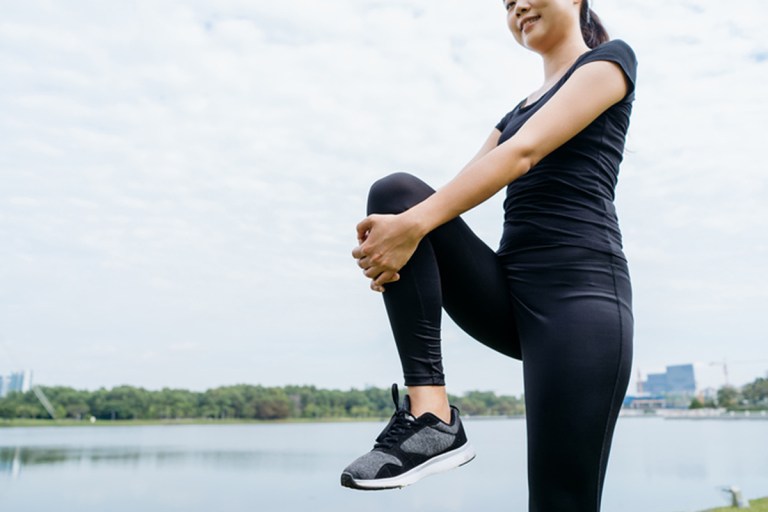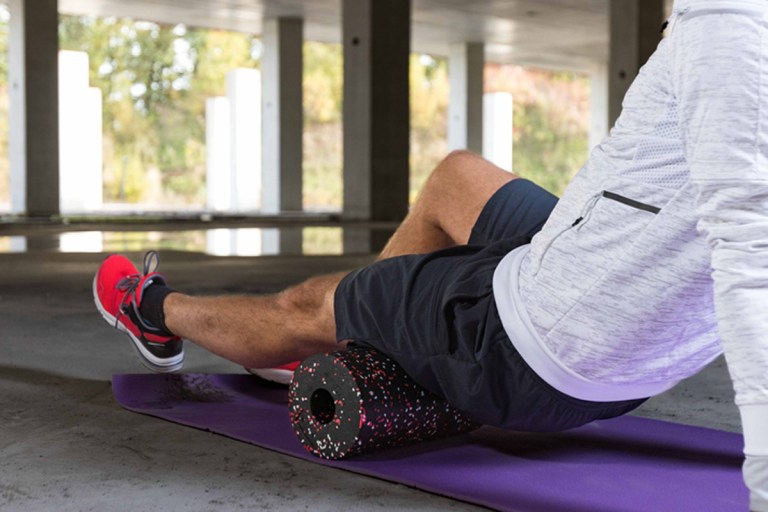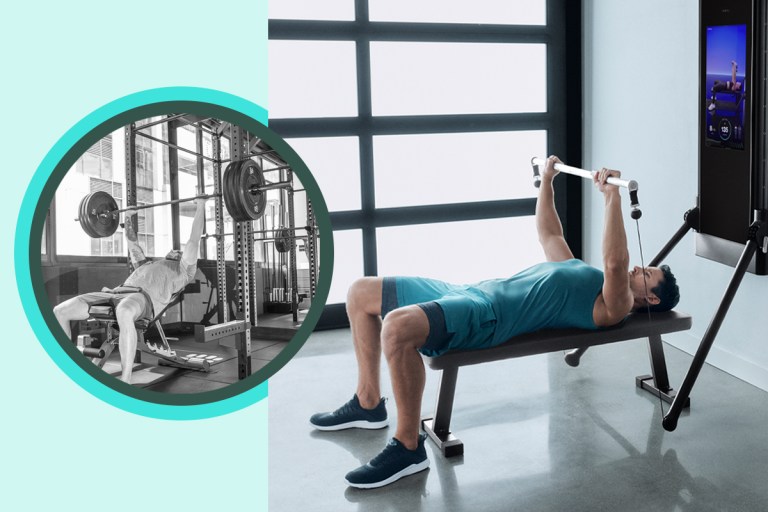7 Exercises to Prevent and Relieve Hip Flexor Pain
Hip flexor pain is a common side effect of a sedentary lifestyle. Try these moves to strengthen and open your hip flexors.

There are some muscles that tend to steal the show when it comes to strength training (think: glutes and pecs). Then, there are other, smaller muscles that play supporting roles but don’t garner much attention until they become a problem. One prime example: the hip flexors.
Responsible for everyday movements—including walking—the hip flexors can easily become tight and painful as a result of overuse or a sedentary lifestyle. Fortunately, there are exercises you can do to relieve hip flexor pain and build strength and stability in these small but essential muscles.
As always, for persistent pain, see a medical doctor or physical therapist to get a specific diagnosis and treatment plan. To relieve and prevent minor hip flexor pain, try these exercises and hip-opening stretches at home.
What Are the Hip Flexors?
While your pain might be concentrated at the front of your hip crease, the hip flexors are actually a group of five muscles that run from the back of your rib cage all the way through your inner thigh. “They are wider, thicker, and longer than most people think,” says Jenna Moore, a certified strength and conditioning coach and Programming Specialist at Tonal. “When it comes to working on the hip flexors, we’ve got to work the entire muscles from top to bottom.”
Two of these muscles, the psoas major and the iliacus, primarily control hip flexion—any movement that involves bringing your knees closer to your chest such as walking, running, or squatting. In general, flexion is defined as bending a joint to create a smaller angle, as Tonal coach and certified personal trainer Tim Landicho explains. For hip flexion, specifically, he says this involves closing the angle between your torso and your thigh.
What Causes Hip Flexor Pain?
Extended periods of sitting (which most of us do every day) and repetitive motion that involves hip flexion, such as walking or running, are two of the main causes of hip flexor pain according to Moore. Sitting all day can lead to the muscle fibers within the hip flexors overlapping, which results in shortened, tight muscles. When these muscles are tight, Moore explains, “they can’t contract as forcefully and as quickly as they can when there’s the appropriate amount of overlap.”
Hip-opening stretches can help, but it’s also important to strengthen these muscles. “A lot of people mistake weakness for tightness,” says Moore. “The muscle gets weak as it shortens.”
When your hip flexors are weak, other muscles, such as the glutes and hamstrings, will overcompensate, potentially leading to pain and imbalances in other areas. “Your adjacent muscles start to sacrifice their stability and mobility to help out the hip flexors,” says Moore. As you work on strengthening your hip flexors, you’ll always want to include exercises for these surrounding muscles.
7 Exercises to Prevent and Relieve Hip Flexor Pain
Add these exercises into your weekly routine if you’re dealing with hip flexor pain. Because these are small muscles, don’t be surprised if the movements appear simple. “When you are working on hip flexor strengthening, it doesn’t require a lot of weight and it doesn’t require a lot of range of motion,” says Moore. “It’s typically a small movement held for a period of time.”
1. Hip Flexor Isometric Hold
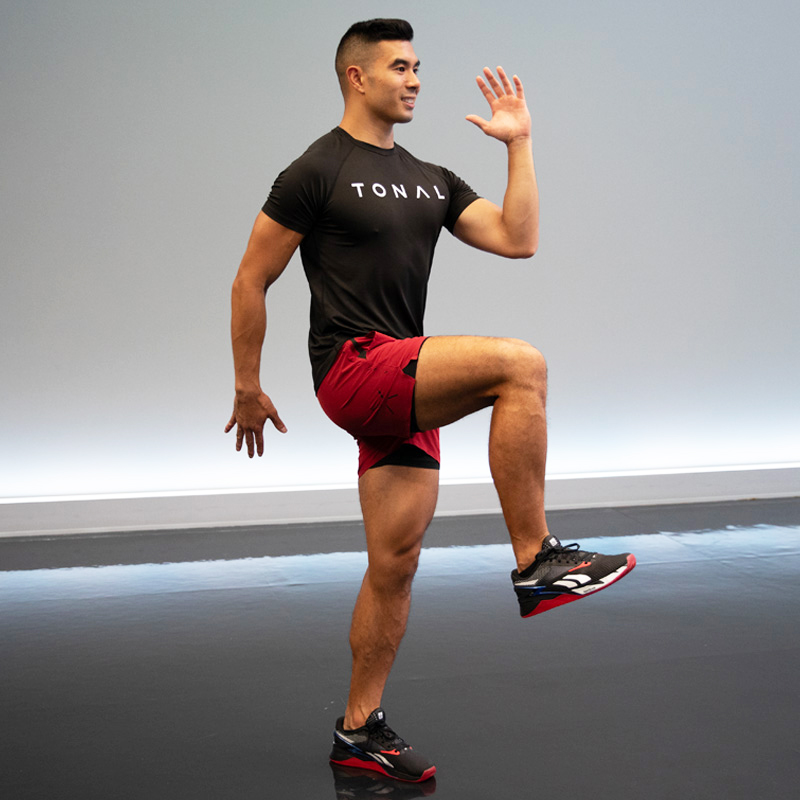
Why it Works: This bodyweight move brings your hip into flexion and challenges you to maintain the contraction in your hip flexors. For more of a challenge, loop a resistance band around the arches of both feet.
How to Do it: From a standing position, pull one knee toward your chest using your hands. Release your hands and try to hold your knee at the same height for a few seconds. Repeat on the alternate side. You can hold onto a wall for balance.
2. Seated Straight Leg Raise
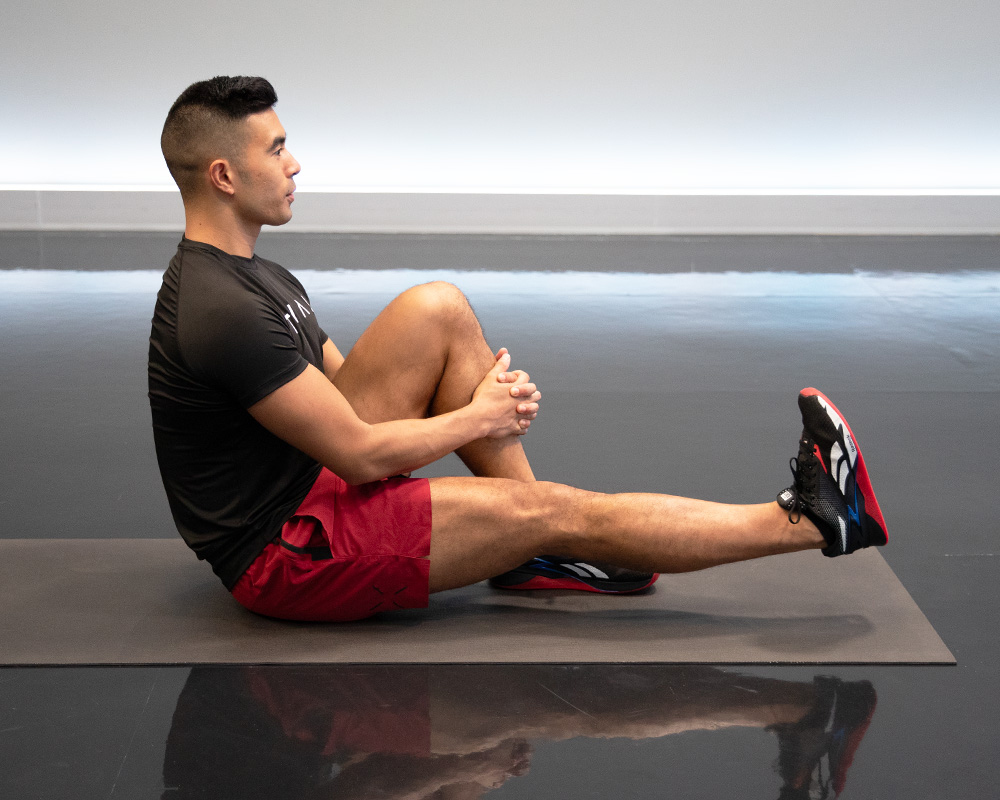
Why it Works: This seated leg raise is Landicho’s pick for strengthening the hip flexors. As you get more comfortable in the movement, work on increasing reps or the amount of time you hold your leg up. Add an ankle weight on your straight leg to make the move more challenging.
How to Do it: Sit on your mat with one knee bent, foot flat on the floor, and the other leg extended in front of you. Raise your straight leg off the ground and hold. Repeat on the alternate side.
3. Quad Hip Stretch
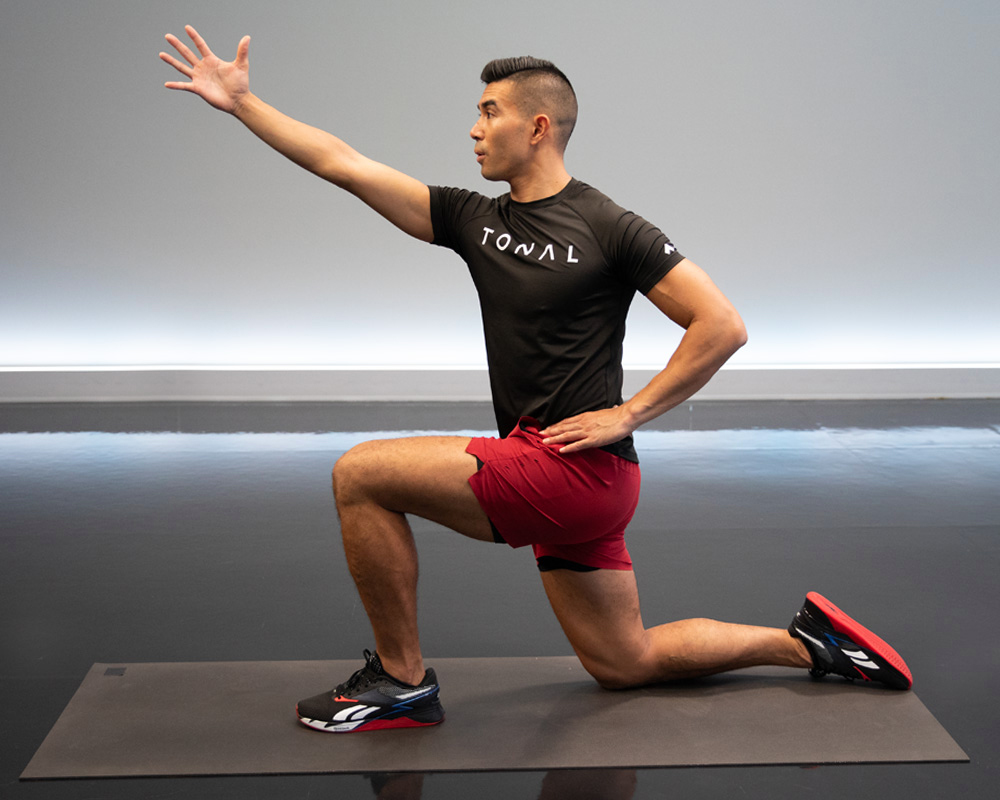
Why it Works: This simple stretch builds flexibility and mobility in the hip flexors, but it’s important to do it correctly. Instead of leaning as far forward as you can, Moore says to focus on tucking your tailbone and gently moving forward. Landicho adds that you’ll know you’re doing this movement correctly if you feel the glute of your back leg and lower abs fired up—even if you only move forward slightly. “Find your end range without losing that pelvic position,” he says.
How to Do it: Start in a half-kneeling position on your mat. With the arm that’s opposite the front leg, reach up and forward like you’re trying to touch the ceiling, rotating at your torso and shifting your weight forward as you twist toward the front leg.
4. Hamstring Walkout
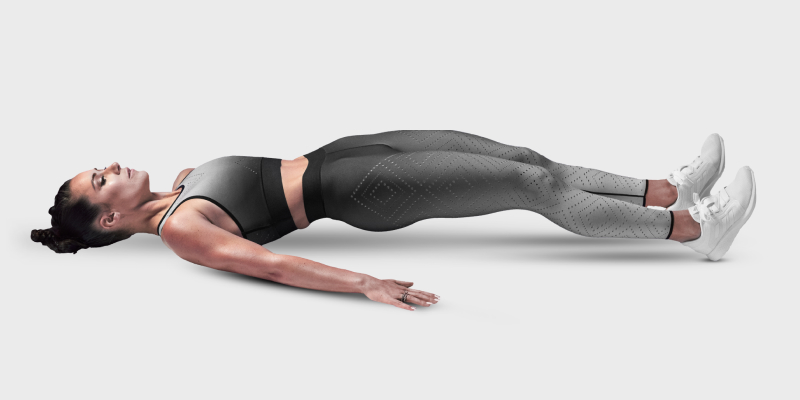
Why it Works: Landicho recommends this move for practicing pelvic control while working the glutes and hamstrings. He explains this movement mimics the demands of walking and running as you’re using your hip flexors while your legs are extended. If this movement feels difficult, start with a static glute bridge to lock in the correct pelvic positioning.
How to Do it: Lie face up on your mat and bring your heels to the floor just below your glutes, toes lifted and knees toward the ceiling. Alternating sides, step one heel out until both legs are almost straight, keeping your glutes lifted off the floor. Walk the feet back in and repeat.
5. Cobra Pose

Why it Works: The anterior pelvic tilt position that puts stress on the hamstrings can also tighten the core muscles. To stretch your core and get these muscles in position to work, Moore recommends the yoga-inspired cobra stretch.
How to Do it: Lie face down with your palms on the ground directly underneath your shoulders. Push down on the ground with your palms to straighten your arms and lift your chest up, keeping your elbows tucked into your sides and your neck neutral.
6. Farmer March

Why it Works: Along with strengthening your core, this movement works your hip flexors each time you raise your knee. To emphasize the hip flexor contraction, Moore recommends holding your knee at the highest position for a few seconds in each rep.
How to Do it: Stand between Tonal’s arms and take a handle in each hand with your arms at your sides. Slowly drive one knee up toward the ceiling, balancing on the opposite leg. Alternate legs.
7. RDL
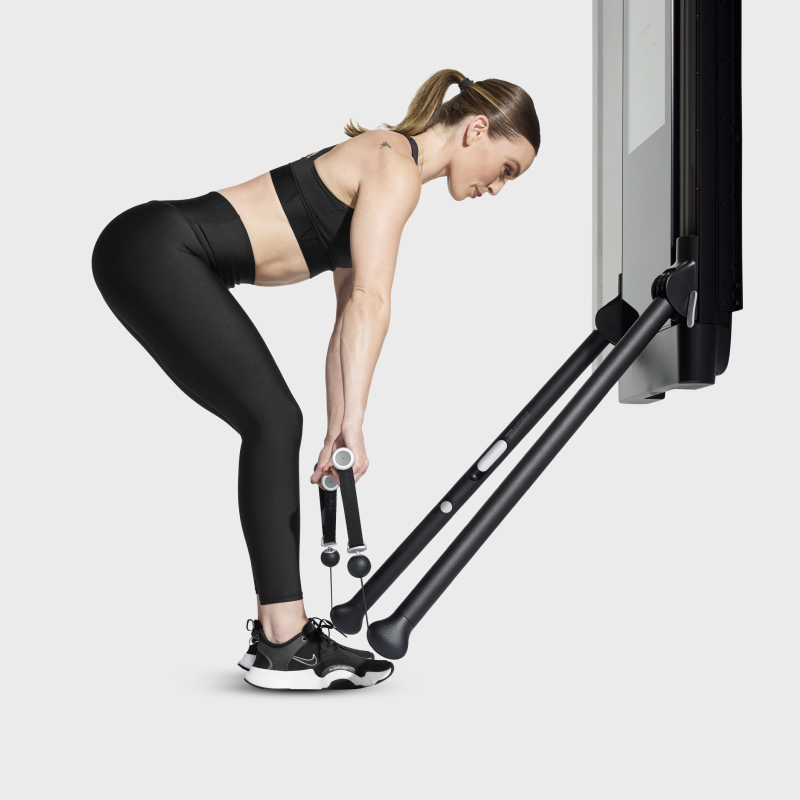
Why it Works: Since tight hip flexors can affect the mobility and strength of the hamstrings, it’s essential to also work on your posterior chain. “When your hip flexors get tight, it’s immediately going to pull your hips into anterior pelvic tilt, with the front of the pelvis tipping forward,” says Moore. “That causes a chain reaction of your hamstring getting pulled and lengthened, which will weaken those as well.” Romanian deadlifts (RDLs) are her top pick for isolating the hamstrings.
How to Do it: With feet hip-width apart, toes lined up with the end of Tonal’s arms, take a handle in each hand and stand tall. With palms facing behind you, slide your hands down your thighs as you reach your hips back like someone is pulling you from behind. Squeeze your glutes and power your hip forward to come back up to standing, sliding the handles up the legs.
Tonal Workouts to Relieve Hip Flexor Pain
A regular dose of mobility work can go a long way in relieving tight or painful hip flexors. These coach-led sessions on Tonal will challenge you to open up and work your hips.
Hip Joint TLC – Coach Kristina Centenari
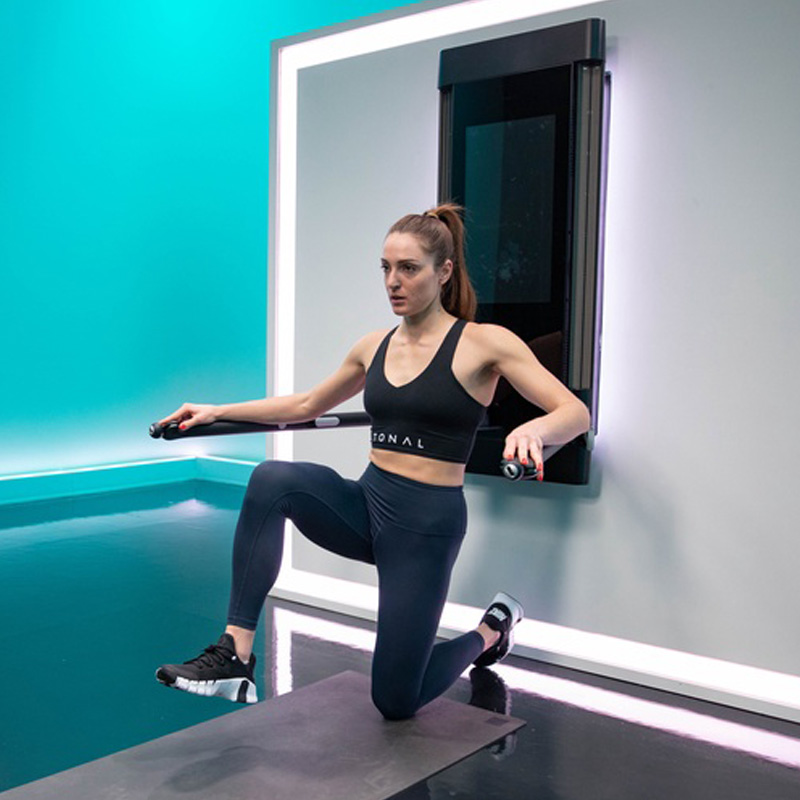
In this mobility workout, Coach Kristina Centenari introduces different variations of hip flexor exercises that’ll test your strength and mobility. Don’t be surprised if you’re a little sore the next day.
Easy Hip Opener – Coach Ash Wilking
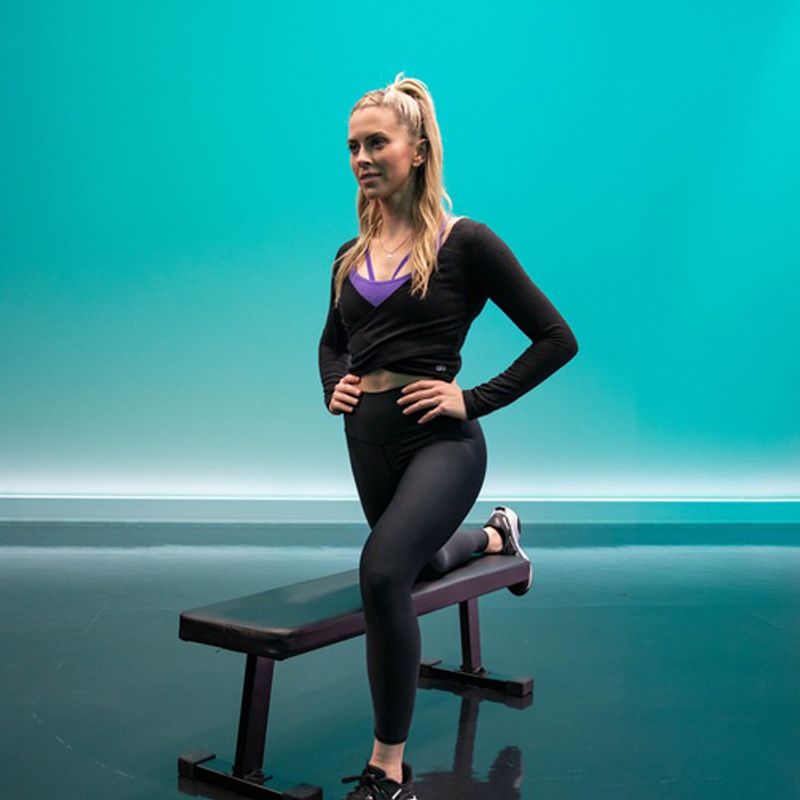
This beginner-friendly session is all about improving range of motion in your hips. You’ll also give your quads and the adductor muscles of your inner thighs some much-needed attention.
Hip and Hamstring Refresh – Coach Ackeem Emmons
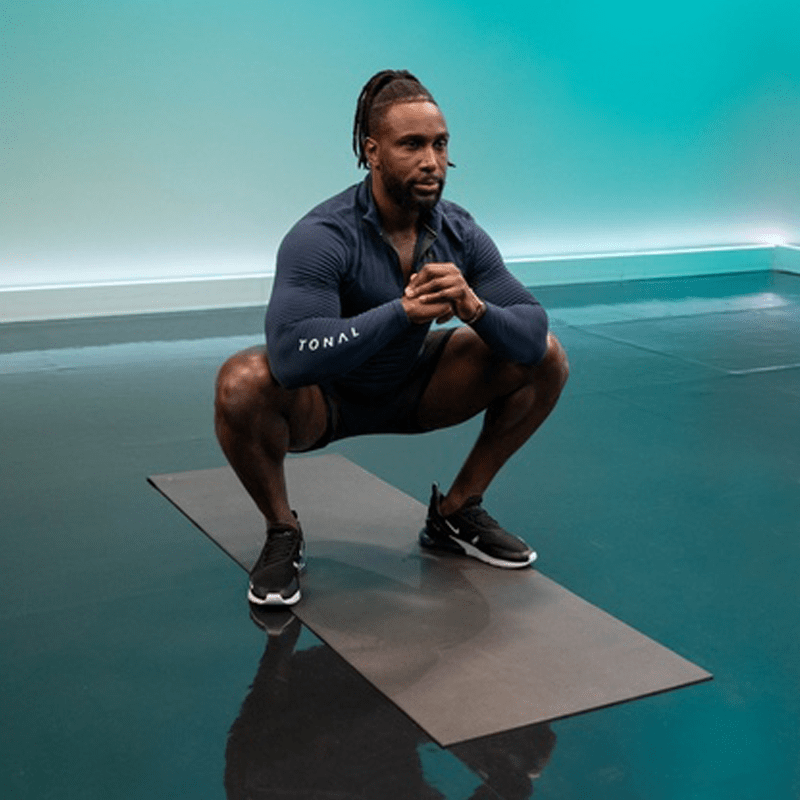
Loosen up your hips and legs with this gentle stretching session. You’ll test your mobility at the start and end of the workout to see how much your range of motion has improved.
The information provided in this article is for educational and informational purposes only. Individuals with pre-existing health conditions, injuries, or concerns should consult with their healthcare provider before trying a new exercise or nutrition regimen.
